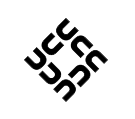|
Size: 3369
Comment: more subnets!
|
Size: 221
Comment: iXQbDz <a href="http://phhkkbhftacc.com/">phhkkbhftacc</a>, [url=http://qwqvyxbxnaxj.com/]qwqvyxbxnaxj[/url], [link=http://jvgwbldmkkiz.com/]jvgwbldmkkiz[/link], http://vvonczqzxvtn.com/
|
| Deletions are marked like this. | Additions are marked like this. |
| Line 1: | Line 1: |
| Understanding UCC's network can be a bit challenging at first, but after a bit of reading you'll find that it is actually very challenging, and give up. This article is a general overview of how it works. [[TableOfContents]] == Layer One == === Uplink === There is a long piece of CAT5 running through the walls from the machine room to the Guild machine room in Cameron Hall (across from UWAnime). This plugs in to a 100M D-Link media converter, which leads to a similar media converter in the Guild comms room in the main Guild building. Our uplink is into an ITS managed switch called 'cruzob'. === Machine Room === The machine rooms contains three core switches and a router: * Olive, a 24-port Cisco Catalyst 2900 series switch. * Lorenzo, a 48-port Cisco Catalyst 2950 series with some dead ports and dual gigabit uplinks. * Curviceps, a 24-port HP Procurve with full gig ports. * Madako, a linux-based router running iptables. These are all labeled and in the rack. There is also a patch panel for the clubroom wall-ports at the top of the rack. === Clubroom === There is CAT5 cabling run from a patch panel at the top of the rack to a number of wall ports throughout the room. Where not enough wall-ports are available, there are small 5-port unmanaged switches used to attach more devices to the network. == Layer Two == === Internal VLANs === UCC uses seven VLANs internally for various purposes: * VLAN 1: Network and server management. * VLAN 2: Machine room network. * VLAN 3: Clubroom network. * VLAN 5: Loft network (used for LANs). * VLAN 6: Wireless network. * VLAN 7: Printers. * VLAN 8: Netboot (Ubuntu port) === External VLANs === ITS trunks to us the following VLANs: * VLAN 11: SNAP. * VLAN 13: Our main uplink, provides us our internet connection and address space. * VLAN 102: Guild clubs. Not used by UCC, forwarded on to UniSFA. == Layer Three == Layer three at UCC is pretty nasty, and the firewall script alone probable deserves its own article. However, a brief summary of how it all works: === Subnets === There are a number of IP ranges used at UCC for various things: * 130.95.13.0/24 is the public address space for our AARNet connection. Incoming, non-peering traffic to these addresses is charged at 4c/mb. This range is routed to us via VLAN 13. * 130.95.13.0/26 is the machine room address range, internally routed on VLAN 2. * 130.95.13.64/26 is the clubroom address range, internally routed on VLAN 3. * 203.24.97.249/29 is the public address space for our Silk connection. Traffic to and from these addresses is unmetered. This range is also routed to us via VLAN 13. * 10.13.13.0/24 is a private range used for network printers. These addresses reside on VLAN 7 and are not routed outside. * 10.203.13.0/24 is our address range on the Resnet (college) network. Routed via VLAN 13. * 172.26.42.0/24 is for 'untrusted client machines' - there is some history here, but they are never routed outside the Uni (unless NAT is involved, which it is). * 172.26.42.8/29 is the Ubuntu Port (netboot install) network. * 172.26.42.96/27 is the range we use for PPTP. * 172.26.42.128/26 is the loft network range. * 172.26.42.192/27 is the 'ugg' wireless network range * 172.26.24.224/27 is used by Flying for the 'ucc' wireless network, currently unavailable. |
iXQbDz <a href="http://phhkkbhftacc.com/">phhkkbhftacc</a>, [url=http://qwqvyxbxnaxj.com/]qwqvyxbxnaxj[/url], [link=http://jvgwbldmkkiz.com/]jvgwbldmkkiz[/link], http://vvonczqzxvtn.com/ ---- CategoryProjectsComplete |
UCC Wiki



